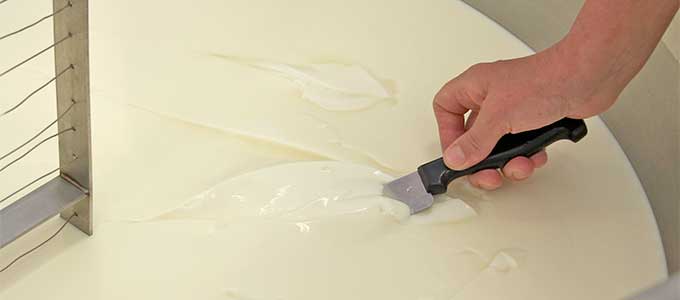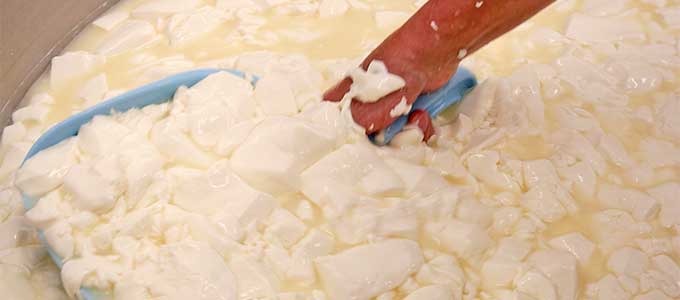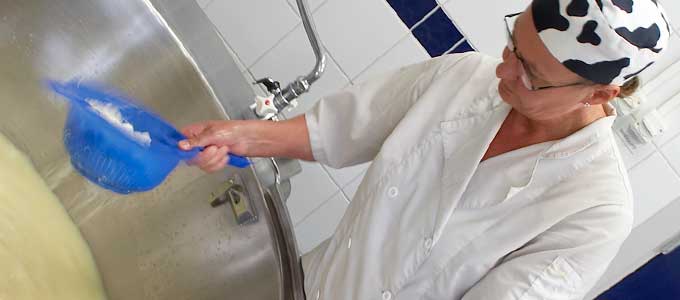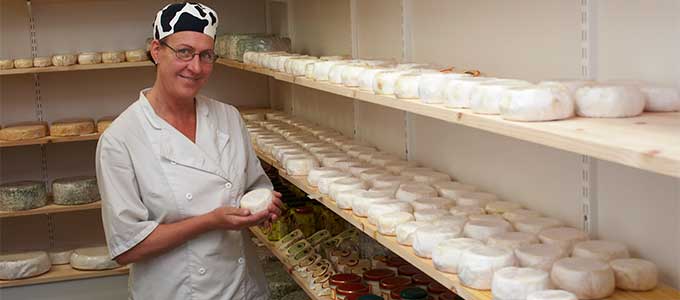Making cheese – curdling milk – takes time. But if it is done properly the cheese produced will be good, and well-worth the effort. In its final stages of production you get a pleasant “squirrel-like” feeling, seeing different kinds of cheeses on shelf after shelf. The curdling process begins with the milk. If the raw product is not of a good quality the cheese will not be good either. The milk must be nice and clean and contain only good bacteria. That is ensured outside with the management of the cows in the byre.
The milk is taken into the dairy by means of a pipe which is connected to the milking parlour. It is taken directly from the cooling tank into the cheese-making area. Then the milk is heated to just over 30 degrees centigrade. After that the lactic acid bacteria are added. These are “good” bacteria that you want to develop quickly. If this happens then the milk is protected from the “bad” bacteria.
When rennet is added, the milk solidifies and becomes like a large crème caramel pudding, which is then cut into slices. The large slices, which are like marshmallows, are used for soft dessert cheeses, while the smaller pieces, like corn grains, turn into harder cheeses.
Dessert cheeses are carefully stirred for a short while by hand, resting for long periods in-between. Harder cheeses are constantly stirred much more energetically.
When the whey is ready to be drawn off, it is scooped up with a colander in moulds. Different moulds are used for different types of cheese. Then the cheeses are turned for the rest of the day to allow the by-product whey to drain off, as well as for the cheese to get a nice shape.
The cheeses are then allowed to stand out overnight in the dairy, at a warm temperature. The following day the cheeses are salted, either by allowing them to soak for a number of hours in a salt solution, or by slapping in the salt around the cheese.
Then the white-mould cheeses are stored at a temperature of about 13 degrees centigrade, while the blue cheeses are stored at a temperature of about 8 degrees centigrade. When the mould has ripened sufficiently, which takes a slightly different number of weeks depending on the cheese, the cheese is then placed in cold storage, where the temperature is 4 degrees centigrade. Here, the cheeses mature and get their delicious, round taste.
Besides the white and blue cheeses, we make a number of other cheeses, and these are produced in various other ways.




